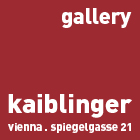Original paintings & sculptures
Hollegha Wolfgang
Klagenfurt *1929 - †2023 Rechberg
In his works Wolfgang Hollegha captures his view of the world which originates from his understanding of nature and which he clarifies through abstraction. He shows us a colourful interplay by capturing the wholeness of nature with loosely placed, seemingly upwardly ascending bands of colour.
From 1947 to 1954 the Carinthian studied at the Academy of Fine Arts in Vienna under Josef Dobrowsky and Herbert Boeckl. He is one of the artists who, after the Second World War in Vienna, helped abstraction to make its breakthrough in Austria in the 1950s. In 1956 a group of artists formed around the Galerie Nächst St. Stephan with Wolfgang Hollegha, Markus Prachensky, Josef Mikl and Arnulf Rainer, who were strongly inspired by informal American painting. In the following years they determined the Viennese avant-garde scene, which found its greatest patron in Monsignor Otto Mauer, the director of the gallery.
In 1960 Hollegha was invited to New York by Clement Greenberg to participate in a group exhibition of abstract painters. In 1964 he took part in the Documenta III in Kassel. Since 1962 he has lived and worked on the Rechberg in Styria, where he had a 15-meter-high studio built from wood according to his plans. From 1972 to 1997 he was professor and head of a master class at the Academy of Fine Arts in Vienna.
Nature and life in it are Holleghas starting motifs. The artist looks at objects and transforms them into an abstract representation determined by light and colour. With generous gestures, he applies the paint to large areas of the canvas. The triad of primary colours shines between tinted and broken parts. The thin, glazed application of paint lends the paintings luminosity and makes the abstracted motifs appear as if on a white chalk ground. During the act of painting the always large-format canvases lie on the floor, on which the artist pours his thinly stirred colours with a moving gesture. The artist alters the resulting wide colour strips by blurring them with his hand or painting cloth and letting paint drip onto them with the help of a brush. With this painting technique, references to the American Abstract Expressionists such as Sam Francis and Morris Louis and, in a certain way, to Jackson Pollock can be made. Hollegha applies the color surfaces in a controlled manner in different directions. This creates a dynamic full of tension and sets the pictorial space in motion. The white areas, which have been left white, relate to the colour areas and create a harmonious whole.
